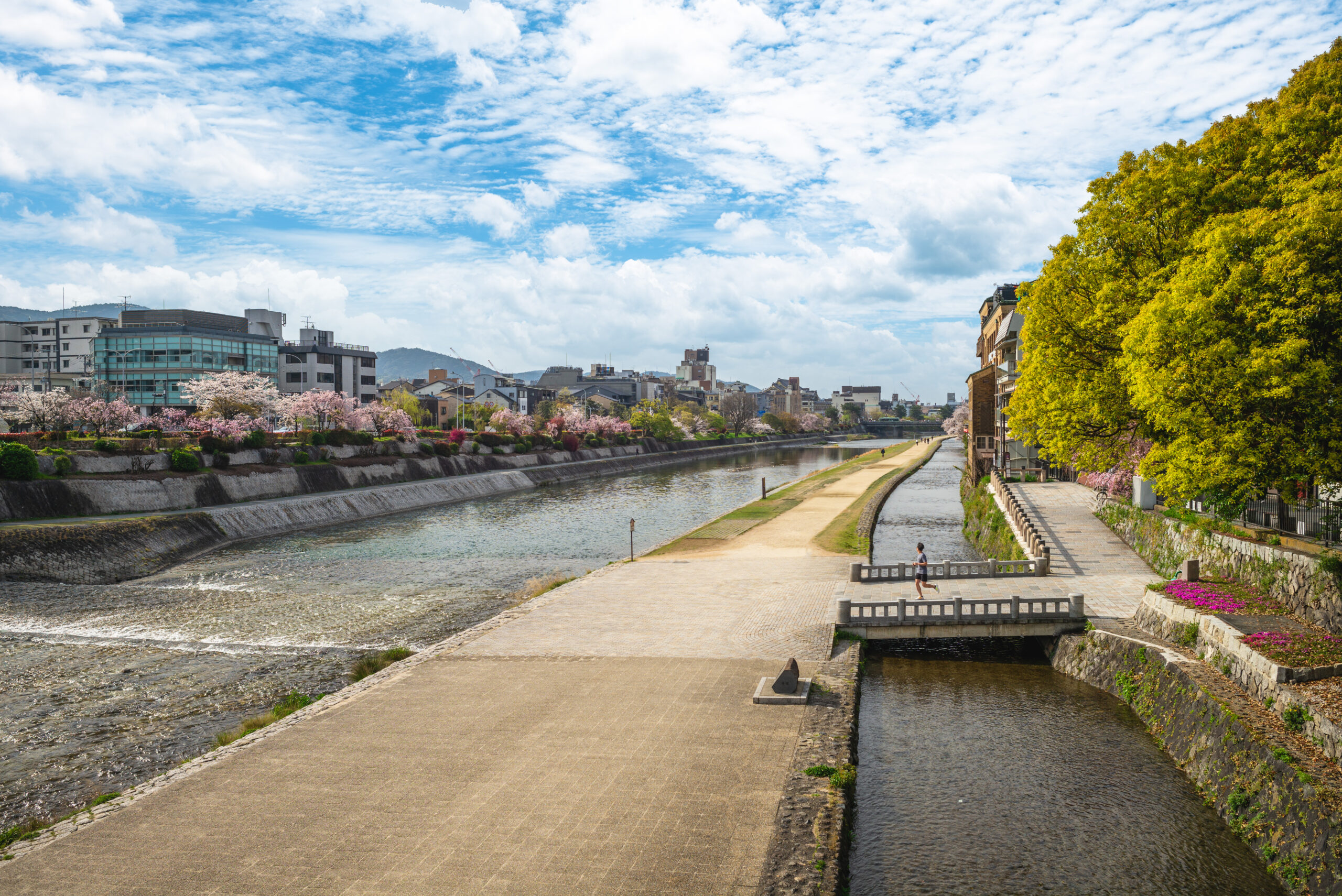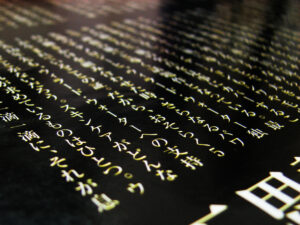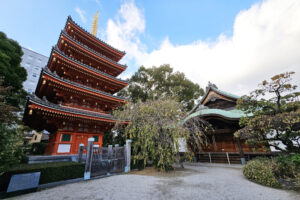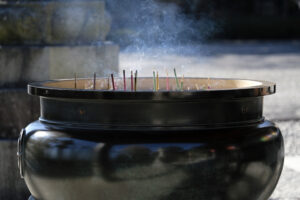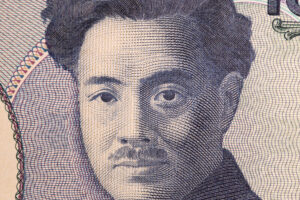Kyoto, Japan’s ancient capital, beckons travelers with its rich tapestry of history, culture, and stunning landscapes. Once the seat of the imperial court, this city is a living museum, where traditional architecture and spiritual rituals coalesce with the modern world. As visitors stroll through its charming streets lined with wooden machiya houses, venture into serene temples, or participate in a tea ceremony, they embark on a journey that transcends time. This article serves as a guide for those ready to explore Kyoto, highlighting its historical significance, cultural treasures, natural beauty, and culinary delights.
Exploring Kyoto: Japan’s Timeless Capital Awaits
Kyoto is a city steeped in history, offering an immersive experience that captivates the hearts of its visitors. Known for its well-preserved heritage, Kyoto is home to 17 UNESCO World Heritage Sites, making it a focal point for cultural exploration in Japan. From its historic temples to its serene gardens, every corner of the city tells a story intertwined with Japan’s past. Walking through Kyoto is akin to stepping back in time, allowing individuals to witness firsthand the traditions that have shaped Japanese culture.
The allure of Kyoto begins at its iconic landmarks, yet it extends far beyond them. The city is a harmonious blend of the ancient and the contemporary, where traditional tea houses coexist with modern boutiques. Visitors can lose themselves in the narrow alleyways of Gion, the city’s geisha district, or take in the breathtaking views from Kiyomizu-dera Temple. Each area has its own unique character, enhancing the overall experience of exploring Kyoto.
One of the most significant aspects of Kyoto is its seasonal allure. Each season paints the city in a new light: spring brings cherry blossoms, summer invites lush greenery, autumn showcases vibrant foliage, and winter drapes the landscape in snow. This ever-changing backdrop adds depth to the exploration, encouraging visitors to return and experience Kyoto at different times of the year.
Furthermore, Kyoto’s accessibility makes it an ideal starting point for those looking to explore the wider Kansai region. With efficient transport links to cities like Osaka and Nara, visitors can easily incorporate day trips into their itineraries. This interconnectedness enhances the allure of Kyoto as not just a destination, but a gateway to the rich cultural heritage of Japan.
Engaging with Kyoto is not merely about sightseeing; it is about participating in a living culture. Visitors can attend festivals, witness traditional crafts being made, and taste local delicacies, creating a deeper connection with the city. This sense of immersion is what makes Kyoto a timeless capital, where every experience resonates with the echoes of the past.
In short, Kyoto invites travelers to explore its multifaceted offerings, from its historic roots to contemporary cultural practices. Whether one is a history buff, a nature lover, or a culinary enthusiast, Kyoto promises a journey that is as enriching as it is unforgettable.
A Brief History of Kyoto: From Imperial City to Today
Kyoto’s history stretches back over a millennium, making it one of the oldest cities in Japan. Established as the imperial capital in 794 AD during the Heian period, Kyoto flourished as the political, cultural, and spiritual heart of the nation. It was during this era that many of Japan’s defining cultural practices, including the tea ceremony, calligraphy, and the arts, were developed. The city became synonymous with refinement and elegance, attracting scholars, artists, and nobles.
Throughout the centuries, Kyoto witnessed numerous historical events, including various wars and disasters that shaped its development. The city’s significance as the imperial capital continued until the Meiji Restoration in 1868 when the imperial seat was moved to Tokyo. Despite the shift, Kyoto retained its status as a cultural capital, preserving its rich traditions and heritage.
The architecture of Kyoto is a testament to its historical journey. Although many structures have been lost to fires and wars, a significant number of temples, shrines, and palaces remain intact. Notable sites such as the Kinkaku-ji (Golden Pavilion) and the Nijo Castle serve as windows into the past, showcasing the grandeur of bygone eras. These landmarks are not just tourist attractions; they embody the spirit of an age that prioritized art, culture, and spirituality.
In the 20th century, Kyoto faced modern challenges, including rapid urbanization and industrialization. However, the city has managed to strike a balance between progress and preservation, implementing measures to protect its cultural heritage. This ongoing commitment is evident in various cultural festivals and traditional arts that are still celebrated today, ensuring that the legacy of Kyoto is passed down through generations.
Kyoto’s resilience is also reflected in its community. The people of Kyoto have a profound sense of pride in their heritage, often taking part in activities that promote local crafts and traditions. This connection to the past fosters a unique atmosphere that resonates throughout the city, allowing visitors to immerse themselves in the essence of Kyoto.
As travelers explore Kyoto, they are not merely visiting a city; they are stepping into a rich narrative that has unfolded over centuries. The blend of historical significance and contemporary culture makes Kyoto a compelling destination that honors its past while embracing the present.
Must-See Landmarks: Temples and Shrines of Kyoto
Kyoto’s landscape is adorned with temples and shrines, each a treasure trove of history and architecture. Among the most famous is the Kinkaku-ji, or the Golden Pavilion, which reflects the exquisite aesthetics of the Muromachi period. Built in the 14th century, this Zen temple is covered in gold leaf and surrounded by lush gardens, creating a stunning visual harmony that captivates visitors year-round. The serene setting invites contemplation, embodying the zen philosophy that permeates many aspects of Kyoto’s culture.
Another must-see landmark is the Fushimi Inari Taisha, renowned for its thousands of vermilion torii gates that wind through the sacred Mount Inari. This Shinto shrine dedicated to Inari, the deity of rice, offers a unique hiking experience as visitors traverse the trails lined with torii gates, each donated by individuals or businesses seeking prosperity. The vibrant colors of the gates against the natural backdrop create a mesmerizing spectacle, especially at sunrise or sunset.
Kiyomizu-dera, a UNESCO World Heritage Site, is another essential stop for anyone visiting Kyoto. Founded in the 8th century, this temple is famous for its wooden stage that juts out over the hillside, providing breathtaking views of cherry and maple trees. The temple is also home to the sacred Otowa Waterfall, where visitors can drink from three streams believed to grant different wishes, adding a layer of spiritual engagement to the visit.
The Ryoan-ji Temple, with its iconic rock garden, offers a moment of tranquility away from the bustling city. This Zen temple is famous for its minimalist design, inviting visitors to reflect and meditate. The carefully arranged rocks and gravel represent a profound connection with nature and the philosophy of Zen Buddhism, making it a perfect spot for introspection.
Nanzen-ji Temple, another significant site, is a sprawling complex with multiple sub-temples and beautiful gardens. It serves as a prime example of the integration of architecture and nature, showcasing the harmony that can be achieved in Buddhist temple design. The impressive Sanmon gate and the picturesque aqueduct add to its historical significance, making it a popular destination for both tourists and locals.
Finally, the Heian Shrine, characterized by its stunning gardens and impressive torii gate, is a testament to Kyoto’s imperial past. Constructed in 1895 to commemorate the 1100th anniversary of the city, the shrine offers a glimpse into the architecture of the Heian period. Its serene surroundings provide a perfect escape, allowing visitors to enjoy the beauty of nature while learning about the historical context of Kyoto.
These landmarks, each with their own unique stories and significance, are integral to understanding Kyoto’s cultural heritage. They not only represent architectural marvels but also serve as symbols of the spiritual and historical narratives that have shaped the city over centuries.
The Enigmatic Geisha: Culture and Tradition in Gion
The Gion district of Kyoto is renowned for its geisha culture, an enchanting aspect of Japanese heritage that continues to thrive in modern times. The term "geisha" translates to "art person," reflecting the dedication these women have to mastering various traditional arts, including music, dance, and tea ceremony. Visiting Gion provides an opportunity to glimpse this intricate world, where tradition and artistry come together in a celebration of culture.
As twilight descends, the narrow streets of Gion come alive, illuminated by lanterns that cast a warm glow over the historic wooden machiya houses. It is during this time that visitors may spot geisha, or "geiko" in Kyoto dialect, moving gracefully to appointments in their vibrant kimonos and elaborate hairstyles. This generational art form has endured despite modernization, serving as a testament to the resilience of Kyoto’s cultural heritage.
Engaging with the geisha experience goes beyond mere observation; it encourages deeper understanding and appreciation of their craft. Cultural performances, such as the traditional tea ceremony, offer insights into the rituals and skills that define a geisha’s training. Visitors can participate by attending shows or dining in exclusive ryotei (traditional restaurants), where they can interact with geisha and witness their artistry firsthand.
The training of a geisha is rigorous and begins at a young age. Young women, known as "maiko," undergo years of apprenticing under the guidance of experienced geiko. Their training encompasses not only the performing arts but also etiquette, conversation, and the customs of hospitality. This commitment to excellence ensures that each performance is a unique blend of history, skill, and grace.
While Gion is the most famous geisha district, others, such as Pontocho and Kamishichiken, also contribute to the broader narrative of geisha culture. Each district possesses its own character and atmosphere, attracting visitors eager to experience the charm of geisha tradition. Events such as the Miyako Odori, an annual dance performance, further highlight the significance of geisha in Kyoto’s cultural landscape.
The allure of the geisha transcends the visual spectacle; it invites curiosity about the stories, traditions, and challenges faced by these women. Understanding their role within the broader context of Kyoto’s history enriches the experience, allowing visitors to appreciate the depth and complexity of this captivating aspect of Japanese culture.
Kyoto’s Natural Beauty: Parks and Gardens to Discover
Beyond its historical landmarks, Kyoto is also celebrated for its stunning natural beauty, with an array of parks and gardens that provide a serene escape from the urban environment. The city’s landscape is interspersed with beautifully designed gardens, each offering a unique glimpse into the relationship between nature and Japanese culture. These spaces are not just visually appealing; they embody centuries of philosophy and artistry.
One of the most notable gardens is the Kyoto Botanical Garden, a sprawling oasis that showcases a diverse range of flora from around the world. Visitors can stroll through themed sections, including a Japanese garden, a rose garden, and even a tropical greenhouse. The seasonal changes bring new life to the garden, making it a delightful destination year-round, whether it be cherry blossoms in spring or vibrant foliage in autumn.
The Nanzen-ji Temple complex features beautiful gardens that harmonize with the surrounding architecture. The temple’s karesansui, or dry landscape garden, exemplifies the zen principles of simplicity and tranquility. Visitors can find solace in the meticulously raked gravel and strategically placed stones, inviting moments of reflection and inner peace.
Another gem is the Philosopher’s Path, a scenic walkway that follows a cherry tree-lined canal. This path is particularly enchanting during the sakura season when the trees bloom in a spectacular display of pink blossoms. Along the way, visitors can discover quaint shops, cafes, and small temples, making it not just a walk but a journey through Kyoto’s charm.
At the foot of the Higashiyama mountains, the famous Arashiyama Bamboo Grove captivates all who enter. The towering bamboo stalks create a mesmerizing atmosphere, where sunlight filters through the leaves, casting ethereal shadows on the ground. Walking through this natural wonder is not just an experience; it is an immersion into a world that feels almost otherworldly.
In addition to these prominent locations, smaller gardens such as the Tofuku-ji Temple’s Zen gardens offer hidden delights for those who take the time to explore. These spaces often feature carefully curated landscapes, embodying the essence of Japanese aesthetics and the art of gardening. The interplay of water, stone, and plant life showcases the beauty of nature while inviting meditation and contemplation.
Kyoto’s parks and gardens provide a vital counterbalance to the city’s rich historical narrative, reminding visitors of the importance of nature in Japanese culture. They serve as tranquil retreats where one can reflect on the experiences of the day, reaffirming Kyoto’s status as a city that nurtures both the spirit and the senses.
Culinary Delights: Savoring Kyoto’s Unique Flavors
Kyoto’s culinary scene is a vibrant reflection of its cultural heritage, offering a rich tapestry of flavors rooted in centuries-old traditions. Known for its kaiseki cuisine, a multi-course dining experience that emphasizes seasonal ingredients and presentation, the city invites food enthusiasts to embark on a gastronomic journey. Kaiseki is not just a meal; it is an art form that showcases the harmony between food and nature.
The principles of kaiseki are grounded in the Japanese philosophy of "shun," which highlights the importance of using ingredients at their peak freshness. This approach allows chefs to create dishes that are not only visually stunning but also bursting with flavor. Each course is thoughtfully prepared, often featuring local vegetables, fish, and grains, culminating in a dining experience that celebrates the essence of Kyoto’s culinary identity.
In addition to kaiseki, yudofu (tofu hot pot) is another must-try dish when visiting Kyoto. This simple yet delicious meal exemplifies the city’s deep connection to Buddhist vegetarian cuisine. The silky texture of locally sourced tofu combined with seasonal vegetables creates a comforting dish that reflects Kyoto’s culinary roots.
Street food lovers will find delight in exploring Nishiki Market, a bustling food market where vendors offer a variety of local specialties. From pickled vegetables and grilled seafood to sweet treats like yatsuhashi (cinnamon rice flour sweets), the market is a sensory explosion that invites visitors to sample the flavors of Kyoto. The vibrant atmosphere coupled with the array of food stalls makes for an unforgettable culinary adventure.
Matcha, or powdered green tea, holds a special place in Kyoto’s culinary landscape, renowned for its quality and flavor. Visitors can partake in a traditional tea ceremony, where the art of matcha preparation is showcased. Alternatively, numerous tea houses offer matcha-infused sweets, including matcha ice cream and wagashi (Japanese confections), allowing guests to indulge in this quintessential Kyoto experience.
Dining in Kyoto also extends beyond traditional cuisine. The city is increasingly home to innovative chefs who blend traditional techniques with modern influences. Contemporary restaurants and cafes are reinterpreting local ingredients, creating dishes that reflect the evolving culinary landscape while honoring the city’s rich heritage.
Ultimately, exploring the culinary delights of Kyoto is a journey that engages the senses. Every bite tells a story, weaving together the city’s history, culture, and artistry, making it an integral aspect of any visit to this timeless capital.
Seasonal Splendor: Witnessing Kyoto Through the Seasons
Kyoto’s charm is amplified by its distinct seasons, each offering a unique perspective on the city’s beauty and culture. The interplay of nature and tradition creates a dynamic backdrop for visitors, inviting them to experience the city in different ways throughout the year. From cherry blossoms in spring to vibrant autumn leaves, Kyoto transforms with the changing seasons, providing an ever-evolving canvas.
Spring, heralded by the arrival of cherry blossom season, draws visitors from around the world eager to witness this breathtaking spectacle. Parks and temples, such as Maruyama Park and the Philosopher’s Path, become shrouded in hues of pink as sakura trees burst into bloom. Hanami, or flower viewing, is a cherished tradition, with locals and tourists alike gathering for picnics under the blossoms, creating a festive atmosphere that embodies the essence of spring.
As spring transitions into summer, Kyoto’s gardens and temples flourish with lush greenery. The Gion Matsuri, one of Japan’s most famous festivals, takes place in July, showcasing elaborate floats and traditional performances. The warm evenings are filled with vibrant celebrations, providing an opportunity for visitors to immerse themselves in Kyoto’s rich cultural heritage. Summer evenings also offer the chance to relax by the riverside, with seasonal food stalls and outdoor events adorning the landscape.
Autumn marks another enchanting season in Kyoto, as the city is awash with vivid hues of red, orange, and gold. The changing leaves create a breathtaking backdrop, attracting photographers and nature enthusiasts. Notable spots like Arashiyama and Tofuku-ji Temple become popular destinations for leaf-peeping, with visitors capturing the beauty of the season. The annual Jidai Matsuri, a festival celebrating Kyoto’s history through a grand procession, further emphasizes the city’s cultural significance during this time.
Winter in Kyoto holds its own charm, as the city is often blanketed in a serene layer of snow. The contrast between the white landscape and the traditional wooden architecture creates a peaceful ambiance. Temples and shrines, adorned with festive decorations, invite visitors to celebrate the New Year with customary rituals. The illumination events, such as the Hanatoro light festival in Arashiyama, transform the city into a magical wonderland, showcasing the beauty of winter nights.
Throughout the year, Kyoto’s seasonal festivals, such as the Aoi Matsuri in spring and the Jidai Matsuri in autumn, highlight the city’s deep connection to its cultural heritage. These celebrations, filled with traditional costumes, music, and dance, allow visitors to engage with the local community and witness the vibrant spirit of Kyoto.
Witnessing Kyoto through the seasons is an experience that transcends mere sightseeing; it is an invitation to engage with the rhythms of nature and culture. Each season offers a distinct narrative, enriching the journey and creating memories that resonate long after the visit has ended.
Local Craftsmanship: Kyoto’s Artisanal Heritage Explored
Kyoto’s vibrant artisanal heritage is a testament to the city’s commitment to preserving traditional crafts that have flourished for generations. As the cultural capital of Japan, Kyoto is home to skilled artisans who dedicate their lives to mastering their crafts, ensuring that the city’s rich heritage continues to thrive. From textiles to pottery, the craftsmanship found in Kyoto reflects the artistry and attention to detail that define Japanese culture.
One of the most renowned crafts is Kyo-yaki, or Kyoto pottery, characterized by its exquisite glazes and intricate designs. Artisans utilize techniques passed down through generations, creating pieces that are both functional and beautiful. Visitors can explore pottery studios in the Kiyomizu area, where they can observe artisans at work and even participate in hands-on workshops to create their own pottery.
Textile arts, particularly the production of Nishijin-ori, a traditional fabric woven in the Nishijin district, are also integral to Kyoto’s artisanal landscape. This intricate weaving technique employs gold and silver threads, resulting in stunning textiles often used in kimonos and ceremonial garments. Visitors can learn about this craft during guided tours, where artisans share their techniques and the significance of their work in Japanese culture.
Kyoto is also famous for its lacquerware, known as Kyo-shiki, which is distinguished by its elegant designs and vibrant colors. Artisans use traditional techniques to create beautiful lacquered items, ranging from tableware to decorative objects. Visitors can explore galleries and shops showcasing these exquisite pieces, offering a glimpse into the meticulous craftsmanship behind each creation.
The art of folding paper, known as origami, has roots in Kyoto as well. This delicate craft elevates simple paper into intricate designs, reflecting the Japanese philosophy of finding beauty in simplicity. Workshops and demonstrations provide opportunities for visitors to learn the art of origami, allowing them to connect with this transformative craft.
In addition to these traditional arts, Kyoto has
